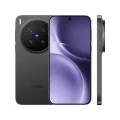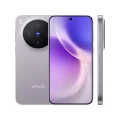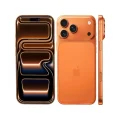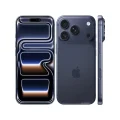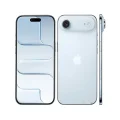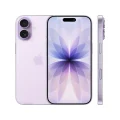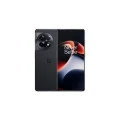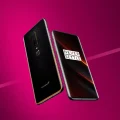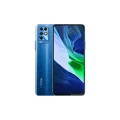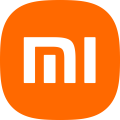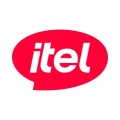- Home
- All Products
- Google Pixel
- Google Pixel 10
Google Pixel 10
-
Battery: 4970 mAh
-
RAM: 12GB
-
Storage: 128GB, 256GB
-
Display: LTPO OLED, 6.3 inches
-
Camera: Rear 48MP+ 10MP+ 12MP and Front 10.5MP
-
OS: Android 16, up to 7 major Android upgrades
Full Specifications
Price
| Official | 129999 BDT 12GB/256GB Approx. |
General
| Model | Google Pixel 10 |
| Announced | 2025, August 20 |
| Released | 2025, August 28 |
| Status | Coming Soon |
Design
| Dimensions | 152.8 x 72 x 8.6 mm (6.02 x 2.83 x 0.34 in) |
| Weight | 204 g (7.20 oz) |
| SIM SIM (Subscriber Identity Module) is a small card that contains mobile network subscriber's account information. This allows the phone using the card to attach to a mobile network. The SIM card is most commonly associated with GSM and UMTS mobile networks. Moving a SIM card from one phone to another allows a subscriber to switch mobile phones without having to contact their mobile network carrier. SIM cards can also be used by a phone to store limited amounts of data, such as phone numbers and text messages. |
Nano-SIM + eSIM |
| Colors |
Indigo, Frost, Lemongrass, Obsidian |
Display Specification
| Display Type Display Technology => A number of display technologies and types used in mobile phones => TFT (Thin Film Transistor), IPS (In-Place Switching), OLED (Organic Light Emitting Diode), AMOLED (Active-Matrix Organic Light-Emitting Diode), Super AMOLED (an even advanced version of AMOLED), Resistive Touchscreen (Resistive touchscreens contain two layer of conductive material with a very small gap between them which acts as a resistance), Capacitive Touchsceen (Capacitive touchscreen technology consists of a layer of glass coated with a transparent conductor) | OLED |
| Size | 6.3 inches, 94.7 cm2 |
| Resolution | 1080 x 2424 pixels, 20:9 ratio |
| Refresh Rate | 120Hz |
| Pixel Density Pixel Density (PPI) is refers to the concentration of pixels on a particular display, measured in pixels per inch (ppi). Pixel density is calculated by dividing the diagonal pixel resolution of a display by its diagonal size, higher pixel density better display quality. | 422 ppi density |
| Display Protection Display Protection => Gorilla Glass is a special alkali-aluminosilicate glass shield with exceptional damage resistance that helps protect mobile displays from scratches, drops, and bumps of everyday use, It is always better to go for a smartphone with Gorilla Glass for that added protection and peace of mind. | Corning Gorilla Glass Victus 2 |
| Features |
86.1% screen-to-body ratio HDR10+, 2000 nits (HBM), 3000 nits (peak) |
Platform
| Operating System OS => Every computer system run on a base software called Operating System (OS). Operating System controls all basic operations of the computer (such as smartphone, PDAs, tablet computers and other handheld devices). The Operating System allows the user to install and run third party applications (apps), apps are used to add new functionality to the device. | Android 16, up to 7 major Android upgrades |
| Chipset Chipset is a group of integrated circuits designed to perform one or a more dedicated functions, often with real time computing constraints, Popular smartphones are equipped with more advanced embedded chipsets that can do many different tasks depending on their programming. | Google Tensor G5 (3 nm) |
| CPU CPU (Central Processing Unit) mostly known as processors, CPU processes instructions in order to carry out certain functions that make your device operate properly. Processors are often described as the brain of computers, smartphones and tablets, Smartphones and tablets rely on processors to carry out their every task, Processors are an incredibly important factor in selecting any type of computing device, including your smartphone. | Octa-core (1x3.1 GHz Cortex-X4 & 3x2.6 GHz Cortex-A720 & 4x1.92 GHz Cortex-A520) |
| GPU GPU (Graphics Processing Unit) is a single-chip processor designed to rapidly manipulate and alter memory to accelerate the creation of images in a frame buffer intended for output to a display, This includes things such as lighting effects, object transformations, and 3D motion. | Mali-G715 MC7 |
Main Camera
| Camera Setup | Triple |
| Resolution |
48 MP, f/1.7, 25mm (wide), 1/2.0", 0.8µm, dual pixel PDAF, OIS 10.8 MP, f/3.1, 112mm (telephoto), 1/3.2", dual pixel PDAF, OIS, 5x optical zoom 13 MP, 120˚ (ultrawide), 1/3.1", PDAF |
| Features |
Single-zone Laser AF, LED flash, Pixel Shift, Ultra-HDR, panorama, Best Take |
| Video | 4K@24/30/60fps, 1080p@24/30/60/120/240fps; gyro-EIS, OIS, 10-bit HDR |
Selfie Camera
| Camera Setup | Single |
| Resolution |
10.5 MP, f/2.2, 95˚, 20mm (ultrawide), 1/3.1", 1.22µm, PDAF |
| Video | 4K@30/60fps, 1080p@30/60fps |
| Features | HDR, panorama |
Network & Connectivity
| Technology | GSM / HSPA / LTE |
| Speed | HSPA, LTE (CA), 5G |
| Wi-fi Wi-Fi is a popular wireless networking technology using radio waves to provide high-speed network connections that allows devices to communicate without cords or cables, Wi-Fi is increasingly becoming the preferred mode of internet connectivity all over the world. | Wi-Fi 802.11 a/b/g/n/ac/6e, dual-band |
| Bluetooth Bluetooth is a wireless communications technology for exchanging data between mobile phones, headsets, computers and other network devices over short distances without wires, Bluetooth technology was primarily designed to support simple wireless networking of personal consumer devices. | 6.0, A2DP, LE, aptX HD |
| NFC NFC (Near field communication) is a set of standards for smartphones and similar devices to establish peer-to-peer radio communications with each other by touching them together or bringing them into proximity, usually no more than a few inches. | Yes |
| Positioning |
GPS (L1+L5), GLONASS, GALILEO, BDS, QZSS, NavIC |
| FM Radio | No |
| USB | USB Type-C 3.2 |
| 2G Network | GSM 850 / 900 / 1800 / 1900 |
| 3G Network |
HSDPA 800 / 850 / 900 / 1700(AWS) / 1900 / 2100 |
| 4G Network |
1, 2, 3, 4, 5, 7, 8, 12, 13, 14, 17, 18, 19, 20, 21, 25, 26, 28, 29, 30, 32, 38, 39, 40, 41, 42, 48, 66, 71, 75 LTE 1, 2, 3, 5, 7, 8, 12, 14, 20, 25, 26, 28.29, 30, 38, 40, 41, 48, 66, 70, 71, 77, 78 SA/NSA/Sub6/mmWave - USA 1, 2, 3, 5, 7, 8, 12, 14, 20, 25, 26, 28, 30, 38, 40, 41, 66, 71, 75, 76, 77, 78, 79 SA/NSA/Sub6 - ROW |
| 5G Network |
SA/NSA/Sub6/mmWave - USA SA/NSA/Sub6 - ROW |
Battery
| Battery Type Battery Type => Cell phones run on various kinds of batteries depending on the manufacturer, phone size or shape and features. There are basically four types of cell phone batteries => Lithium Polymer, Lithium Ion, Nickel Metal Hydride and Nickel Cadmium. | Li-Ion (Lithium Ion) |
| Capacity Battery Capacity is a measure (typically in Amp-hr) of the charge stored by the battery, and is determined by the mass of active material contained in the battery. The battery capacity represents the maximum amount of energy that can be extracted from the battery under certain conditions. | 4970 mAh |
| Removable | No |
| Charging |
30W wired, PD3.0, PPS, 55% in 30 minutes 15W wireless (magnetic), Qi2 Reverse wireless Bypass charging |
| Wireless Charging Wireless Charging (Inductive Charging) uses an electromagnetic field to transfer energy between two objects. This is usually done with a charging station. Energy is sent through an inductive coupling to an electrical device, which can then use that energy to charge batteries or run the device. | Yes |
Multimedia
| Loudspeaker | Yes, with stereo speakers |
| Audio Jack | No |
Storage
| Card Slot Memory Card Slot is a special slot for inserting a memory card. Memory cards allow you to expand the phone's built-in memory, A memory card (sometimes called a flash memory card or a storage card) is a small storage medium used to store data such as text, pictures, audio, and video, for use on small, portable or remote computing devices such as mobile phones, mp3 players, digital cameras. | No |
| Internal Storage Internal Storage is a data storage space (flash memory) mostly used in smartphones, tablets and other electronic devices where operating system, apps, music, photos, videos, files and other user data Is stored. |
128GB 12GB RAM, 256GB 12GB RAM |
Sensors
| Fingerprint | Yes (under display, ultrasonic) |
| Other Sensors | accelerometer, gyro, proximity, compass, barometer, Satellite SOS service, Circle to Search |
PROS
- Premium LTPO OLED with ultra-high brightness
- Strong AI and performance with Tensor G5
- Long software support (7 major updates)
- 5x optical zoom for detailed telephoto shots
- Fast wired and wireless charging with bypass & reverse features
- IP68/IP69 rating for excellent durability
- Includes Satellite SOS for emergencies
CONS
- No microSD card slot
- No 3.5mm headphone jack
- UFS 3.1 storage instead of faster UFS 4.0
- Camera sensors are slightly smaller than previous Pixel flagships
- Not yet confirmed if Wi-Fi 7 will be available
About the Google Pixel 10
The Google Pixel 10 is the upcoming flagship phone in Google’s Pixel lineup, expected to launch in late 2025. Packed with cutting-edge features, it runs on Android 16 and will receive up to 7 major Android updates, making it a future-proof device. It sports a 6.3-inch LTPO OLED display with a 120Hz refresh rate and up to 3000 nits peak brightness, offering sharp visuals and smooth responsiveness. Powering the device is the new Google Tensor G5 chipset (4nm), paired with 12GB RAM and either 128GB or 256GB of fast UFS 3.1 storage.
The camera setup includes a triple rear system with a 48MP main sensor, 10.8MP 5x telephoto, and a 12MP ultrawide lens, plus a 10.5MP selfie camera capable of 4K video. Other highlights include a 4970mAh battery, 29W wired charging, reverse wireless, and satellite SOS support, making it one of the most complete Pixel phones to date.
Main Key Features
- Display: 6.3″ LTPO OLED, 120Hz, HDR10+, 3000 nits peak brightness
- Processor: Google Tensor G5 (4nm), Octa-core
- RAM & Storage: 12GB RAM; 128GB / 256GB UFS 3.1 storage
- Rear Cameras: 48MP (wide, OIS),10.8MP (telephoto, 5x optical zoom), 12MP (ultrawide)
- Front Camera: 10.5MP ultrawide, 4K@60fps video
- Battery: 4970mAh with 29W wired, 15W wireless, reverse wireless, bypass charging
- Operating System: Android 16 (with 7 years of major updates)
- Build: Gorilla Glass Victus 2 front/back, IP68/IP69 water resistance
- Connectivity: 5G, Wi-Fi 6E, Bluetooth 5.4, USB-C 3.2, NFC
- Other: Ultrasonic fingerprint scanner, Satellite SOS, Circle to Search, Best Take
Opinion
The Google Pixel 10 brings powerful AI features, a polished design, and long-term software support, making it ideal for users who want a smart, reliable phone that stays current for years. While it makes some trade-offs with smaller camera sensors and slower storage tech, its strong performance, excellent display, and camera versatility keep it competitive among 2025’s flagships.
See Others, Model:
FAQs about Google Pixel 10
Q: What processor does the Pixel 10 use?
A: It uses the Google Tensor G5, built on a 4nm process for better AI performance and power efficiency.
Q: How many Android updates will it get?
A: The Pixel 10 will receive up to 7 major Android upgrades.
Q: Does it have wireless charging?
A: Yes, it supports 15W wireless with the Pixel Stand, 12W with standard Qi chargers, and reverse wireless charging.
Q: Is the camera good for zoom?
A: Yes, it features a 10.8MP telephoto lens with 5x optical zoom, ideal for distant shots.
Q: Is it water and dust-resistant?
A: Yes, rated IP68/IP69, making it fully resistant to dust and water immersion up to 1.5m for 30 mins.
Give Your Review
Disclaimer Note
You can write your own disclaimer from APS Settings -> General -> Disclaimer Note.
